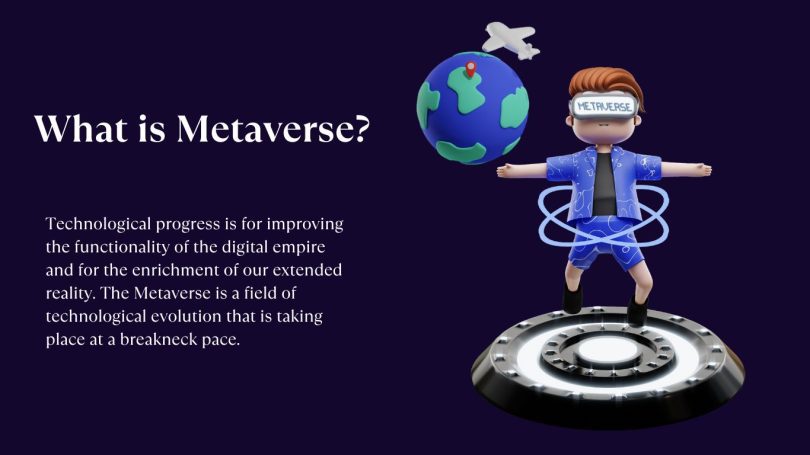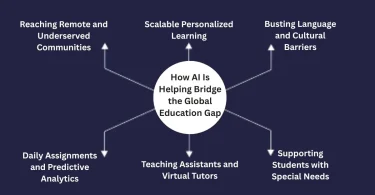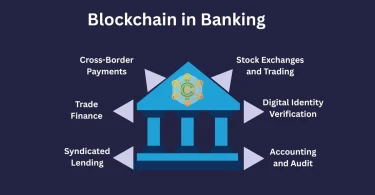Technological progress is for improving the functionality of the digital empire and for the enrichment of our extended reality. The Metaverse is a field of technological evolution that is taking place at a breakneck pace. Just a decade ago, digital communication was restricted to phone calls and text messages, today we are going beyond to the Metaverse where we are discovering new possibilities.
Large technology firms have taken the fundamental idea of the Metaverse and have developed 3D environments that are more advanced. This provides individuals with a digital experience that is very immersive. The Metaverse is leading the way to the start of a new internet era and also the public should be prepared for the benefits of this new version.
Understanding Metaverse Technology:
It is a dynamic domain where the lines between physical and digital spaces blur, with virtual worlds being continuously upheld and collectively experienced by multiple users. It is based on combining AR and VR technologies, thus providing an opportunity for multimodal interactions with digital objects, virtual environments and other virtual users. Hence, the Metaverse is a network of interlinked and social multiuser permanent platforms with an immersive characteristic.
Blockchain technology creates opportunities for cryptocurrencies and non-fungible tokens (NFTs) which give the holders the right of ownership in virtual objects and real estate in metaverse platforms. For example, Meta and Microsoft are part of the companies that are currently working on developing technologies to improve the experience of being inside the virtual world. Many other large companies are also working on the construction of infrastructures that will make it possible to create more advanced and realistic virtual environments.
Features of the Metaverse:
Here we focus on prominent features of the Metaverse that have recently gained prominence, enhancing its reputation in the global technology sector.
Digital Avatars:
The Metaverse concept is essentially built around the creation of digital avatars that allow for the manifestation of specific modes of expression. Avatars are the personalized embodiment, whether the avatar is an original creation or a cultural iconic figure, or a faithful replica of the real person. The creation of avatars is a key factor that brings gamification into the virtual world in order to increase interactivity and dynamism. With over 4. 66 billion global internet users, the idea that AI-powered digital avatars might get to travel to distant places, share information and connect with other avatars becomes very real.
Decentralized Development:
From the list of the Metaverse’s building blocks, decentralization is the most significant element. This aspect promises users an open-source collaborative environment where the transition across platforms will be unnoticeable. In this model, users are free to develop and exchange digital goods and services with economic value without centralized supervision. Technology is the crucial factor in democratizing the Metaverse, bringing the users to the position where they have full control over their digital assets and experiences. Hence, the decentralized nature of the Metaverse makes it different from the traditional internet background.
Enhanced Remote Work Capabilities:
Metaverse provides solutions to the challenges of remote work environments by providing a platform for more varied communication through paralanguage and body language. Managers will be able to make sure that the team productivity is at the level required via avatar representations, for example, they will be able to fix the inefficiency and time mismanagement problems.
Security Considerations:
Dealing with the cybersecurity, ethical values and privacy issues that have been ongoing in the Metaverse ecosystem is the most important. In the same way as in current online environments, secure remote transactions and behavioral oversight are indispensable for ethical conduct.
Infrastructure and Accessibility:
Often the conception of the Metaverse is the immersive experience that is facilitated by virtual reality headsets; however, there is also accessibility beyond these devices to include laptops, PCs, smartphones and tablets. Accenting both human-interface devices and underlying infrastructure is a clear example of the connectivity needed for Metaverse interaction.
Conclusion:
Meta is set to transform our digital reality by erasing the boundaries between the digital and physical worlds, creating a new level of connectivity. This article has investigated some key features such as digital avatars for self-expression, decentralized ownership through blockchain and future implications in remote working. Though these are essential elements of a successful Metaverse, security, privacy and accessibility are still the main issues. As we are moving forward in this digital area, there are endless opportunities for us. What appeals to you most in this proposed future?




Leave a Comment